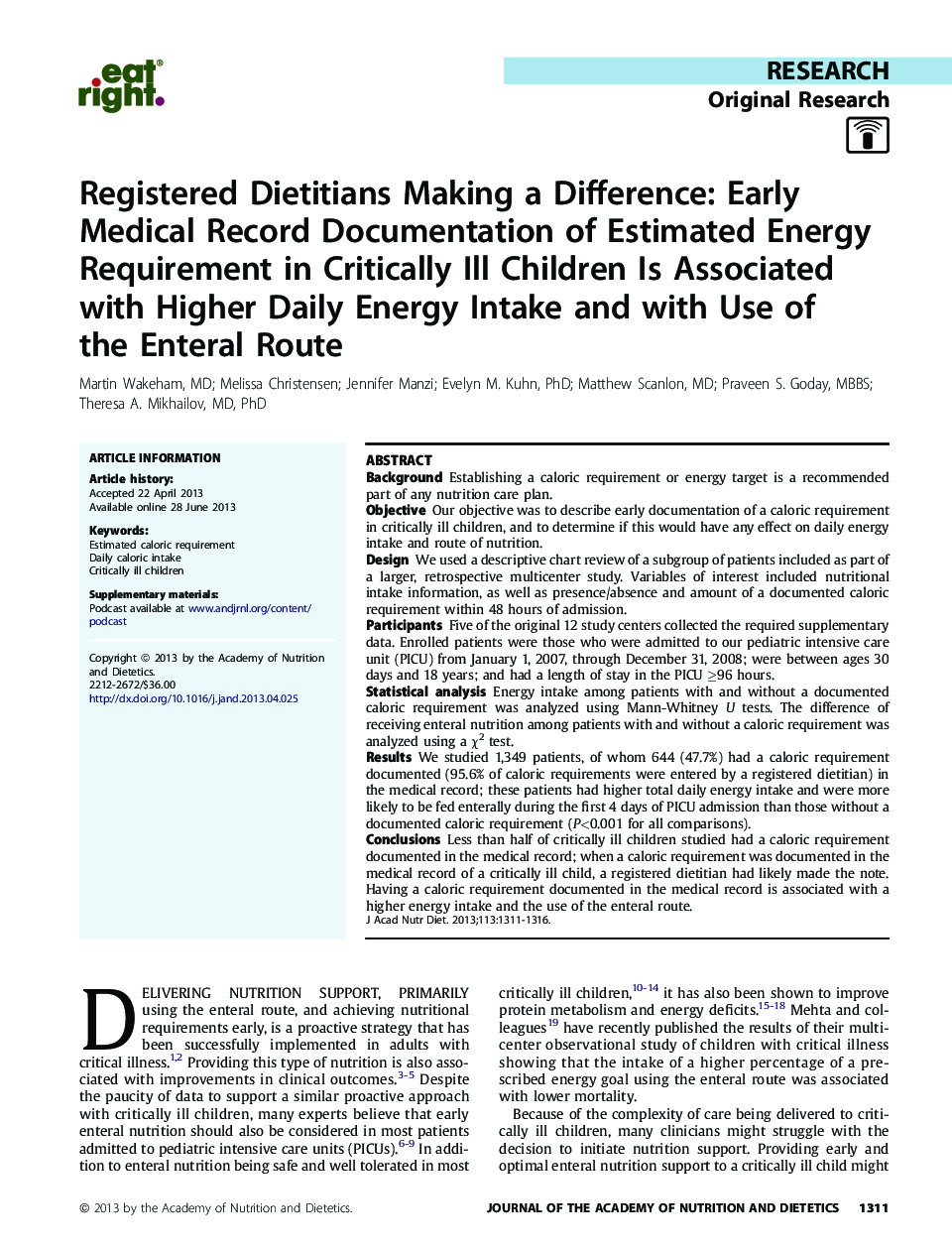| Article ID | Journal | Published Year | Pages | File Type |
|---|---|---|---|---|
| 2654358 | Journal of the Academy of Nutrition and Dietetics | 2013 | 6 Pages |
BackgroundEstablishing a caloric requirement or energy target is a recommended part of any nutrition care plan.ObjectiveOur objective was to describe early documentation of a caloric requirement in critically ill children, and to determine if this would have any effect on daily energy intake and route of nutrition.DesignWe used a descriptive chart review of a subgroup of patients included as part of a larger, retrospective multicenter study. Variables of interest included nutritional intake information, as well as presence/absence and amount of a documented caloric requirement within 48 hours of admission.ParticipantsFive of the original 12 study centers collected the required supplementary data. Enrolled patients were those who were admitted to our pediatric intensive care unit (PICU) from January 1, 2007, through December 31, 2008; were between ages 30 days and 18 years; and had a length of stay in the PICU ≥96 hours.Statistical analysisEnergy intake among patients with and without a documented caloric requirement was analyzed using Mann-Whitney U tests. The difference of receiving enteral nutrition among patients with and without a caloric requirement was analyzed using a χ2 test.ResultsWe studied 1,349 patients, of whom 644 (47.7%) had a caloric requirement documented (95.6% of caloric requirements were entered by a registered dietitian) in the medical record; these patients had higher total daily energy intake and were more likely to be fed enterally during the first 4 days of PICU admission than those without a documented caloric requirement (P<0.001 for all comparisons).ConclusionsLess than half of critically ill children studied had a caloric requirement documented in the medical record; when a caloric requirement was documented in the medical record of a critically ill child, a registered dietitian had likely made the note. Having a caloric requirement documented in the medical record is associated with a higher energy intake and the use of the enteral route.
